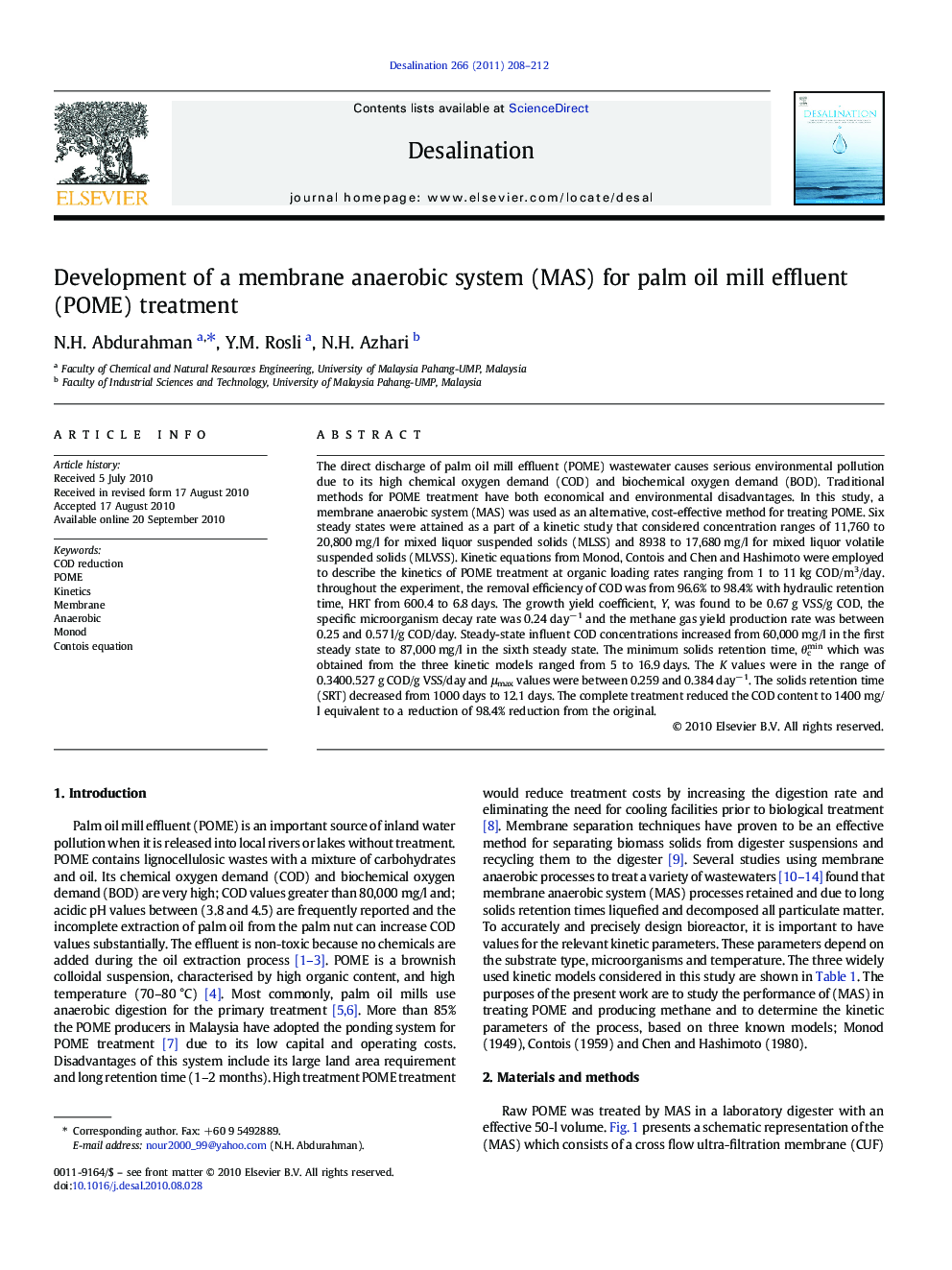| کد مقاله | کد نشریه | سال انتشار | مقاله انگلیسی | نسخه تمام متن |
|---|---|---|---|---|
| 625626 | 1455425 | 2011 | 5 صفحه PDF | دانلود رایگان |

The direct discharge of palm oil mill effluent (POME) wastewater causes serious environmental pollution due to its high chemical oxygen demand (COD) and biochemical oxygen demand (BOD). Traditional methods for POME treatment have both economical and environmental disadvantages. In this study, a membrane anaerobic system (MAS) was used as an alternative, cost-effective method for treating POME. Six steady states were attained as a part of a kinetic study that considered concentration ranges of 11,760 to 20,800 mg/l for mixed liquor suspended solids (MLSS) and 8938 to 17,680 mg/l for mixed liquor volatile suspended solids (MLVSS). Kinetic equations from Monod, Contois and Chen and Hashimoto were employed to describe the kinetics of POME treatment at organic loading rates ranging from 1 to 11 kg COD/m3/day. throughout the experiment, the removal efficiency of COD was from 96.6% to 98.4% with hydraulic retention time, HRT from 600.4 to 6.8 days. The growth yield coefficient, Y, was found to be 0.67 g VSS/g COD, the specific microorganism decay rate was 0.24 day−1 and the methane gas yield production rate was between 0.25 and 0.57 l/g COD/day. Steady-state influent COD concentrations increased from 60,000 mg/l in the first steady state to 87,000 mg/l in the sixth steady state. The minimum solids retention time, θcmin which was obtained from the three kinetic models ranged from 5 to 16.9 days. The K values were in the range of 0.3400.527 g COD/g VSS/day and μmax values were between 0.259 and 0.384 day−1. The solids retention time (SRT) decreased from 1000 days to 12.1 days. The complete treatment reduced the COD content to 1400 mg/l equivalent to a reduction of 98.4% reduction from the original.
Research Highlights
► Palm oil effluent (POME) is an important source of inland water pollution when it is released into local rivers or lakes without treatment. POME contains lignocellulolic wastes with a mixture of carbohydrates and oil.
► The purposes of the present work are to study the performance of (MAS) in treating POME and producing methane and to determine the kinetic parameters of the process.
► MAS were found to be a successful biological treatment system that achieved high COD removal efficiency in a short period of time.
► The proposed kinetic equation were found to be applicable to the anaerobic treatment of palm oil mill effluent (POME).
► MAS were able to operate at high SRT and were quite tolerant of variations in influent COD loadings.
Journal: Desalination - Volume 266, Issues 1–3, 31 January 2011, Pages 208–212